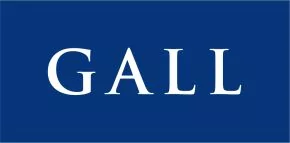The Government has announced that the application for the second tranche of the Employment Support Scheme ("ESS") is set to open on 31 August 2020 until 13 September 2020 ("Application Period"). Employers who wish to apply for ESS relief must submit a new application for the second tranche.
Self-employed individuals who have already received a one-off lump sum subsidy in the first tranche will not be able to apply for the second tranche of the ESS.
What is the subsidy period under the second tranche?
The subsidy period under the second tranche is September to November 2020 ("Subsidy Period").
What are the eligibility criteria?
The eligibility requirements remain the same as the first tranche i.e. it is available for all "regular employees" (i.e. employees aged 18 to 64 who have been employed for a continuous period of 60 days or more) and all employees aged 65 or above, who set up MPF accounts or ORSO schemes on or before 31 March 2020, with the exclusion of certain ineligible employers (for example, the Government and statutory bodies).
What is the amount of subsidy?
The level of the subsidies remains the same: 50% of actual wages in the "specified month", capped at HK$18,000 per employee per month i.e. the maximum subsidy per employee per month is HK$9,000. The subsidies will cover 3 months, from September to November 2020. Under the second tranche, the Government has made relaxations for employees aged 65 or above. If the amount of wage subsidy for employees aged 65 or above is below HK$5,000 per month, the employers may receive a wage subsidy of HK$5,000 for each of such employees per month.
What is the specified month?
An employer may pick a "specified month" (a month between December 2019 to March 2020 which is used as the basis of calculation) for the second tranche of the subsidy.
What are the undertakings an employer is required to provide?
As with the first tranche, employers participating in the second tranche of the ESS are required to undertake that they will -
- not implement redundancies during the Subsidy Period. Therefore, the total number of employees on the payroll (the employees who are on no-pay leave are not included) in any one month during the Subsidy Period should not be less than the total number of paid and unpaid employees in March 2020; and
- spend all the wage subsidies on paying wages to their employees in the same month.
What are the penalties involved?
- Reduction in the headcount
If the total number of employees on the payroll (excluding those on no-pay leave) in any one month of the Subsidy Period is less than the committed headcount of paid employees, the employer will have to pay a penalty to the Government. The penalty calculation for a particular month is the same as the calculation under the first tranche and can be accessed here. If an employer has made MPF contributions or set up ORSO Schemes for new employees in March 2020, the employees concerned will be counted towards the committed headcount of the paid employee.
- Failure to use the wage subsidies
If an employer fails to use all the subsidies received for a particular month to pay the wages of the employees in the same month during the Subsidy Period, the Government will claw back the unspent balance of the subsidy for that month. The calculation of the penalty is the same as the first tranche and can be accessed here.
In addition, the Government has reserved the right to reject an employer's application for the second tranche of wage subsidies and/or claw back the first or second tranche of wage subsidies (in full or in part) if the ESS Secretariat considers that:
- the magnitude of redundancies made by the employer during the subsidy period of the first tranche (i.e. from June to August 2020) was substantial; and
- the employer fails to prove its intention to employ persons to replace those being laid off and/or re-employ those who have been laid off, and/or there is no other reasonable explanations provided for the "redundancies made" by it.
What is the liability for untrue and inaccurate information?
The information provided while making the application must be true, complete, and accurate, failing which, the relevant applications may be rendered invalid, rejected and/or disqualified. Any person who makes false statement, misinterprets, or conceals the facts, or furnishes false or misleading documents or information in an attempt to deceive the Government and/or its appointed agencies commits a criminal offence and could be subject to criminal prosecution.
Are there any further proposed changes under the second tranche?
- The Government will seek undertakings from major property management companies to give back an equivalent of 80% of the subsidies they receive to owners and owners' associations that engage their services,
- PARKnSHOP and Wellcome would be required to provide discounts to the underprivileged and to donate to NGOs during the subsidy period the second tranche.
The details of these undertaking are yet to be published.
The content of this article is intended to provide a general guide to the subject matter. Specialist advice should be sought about your specific circumstances.


